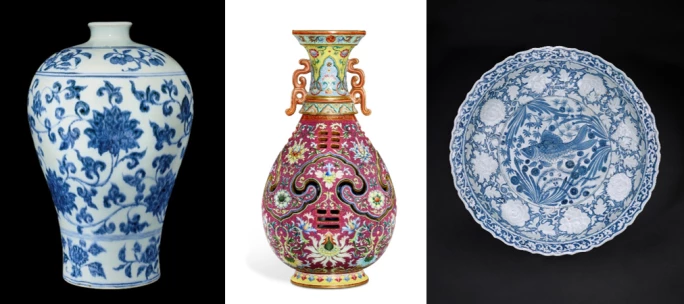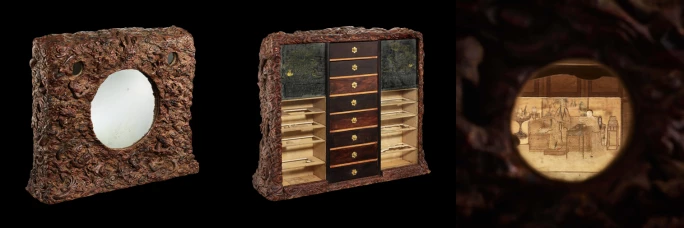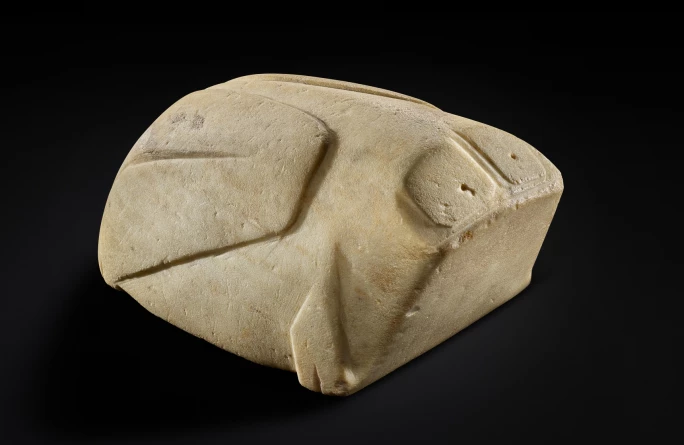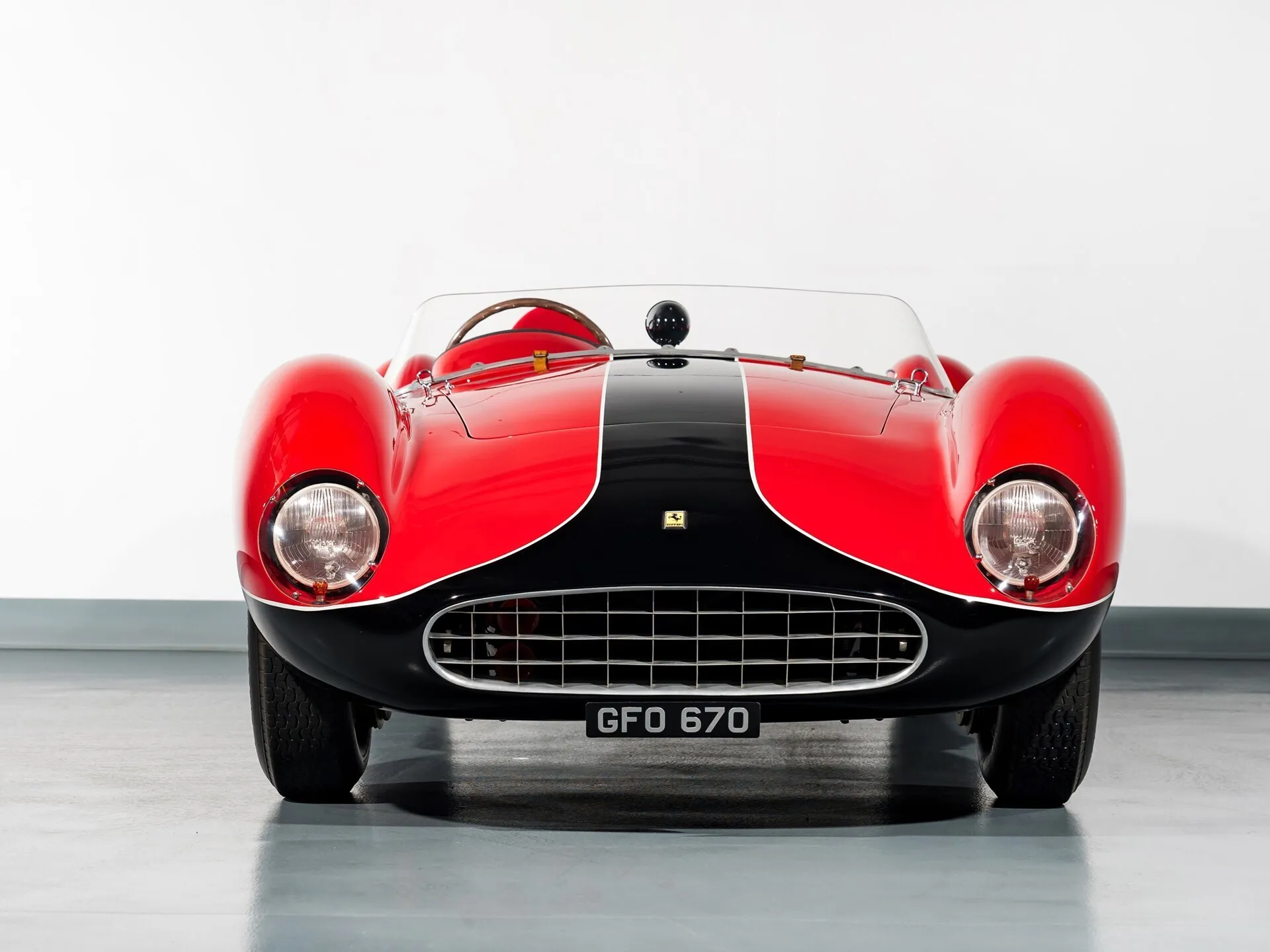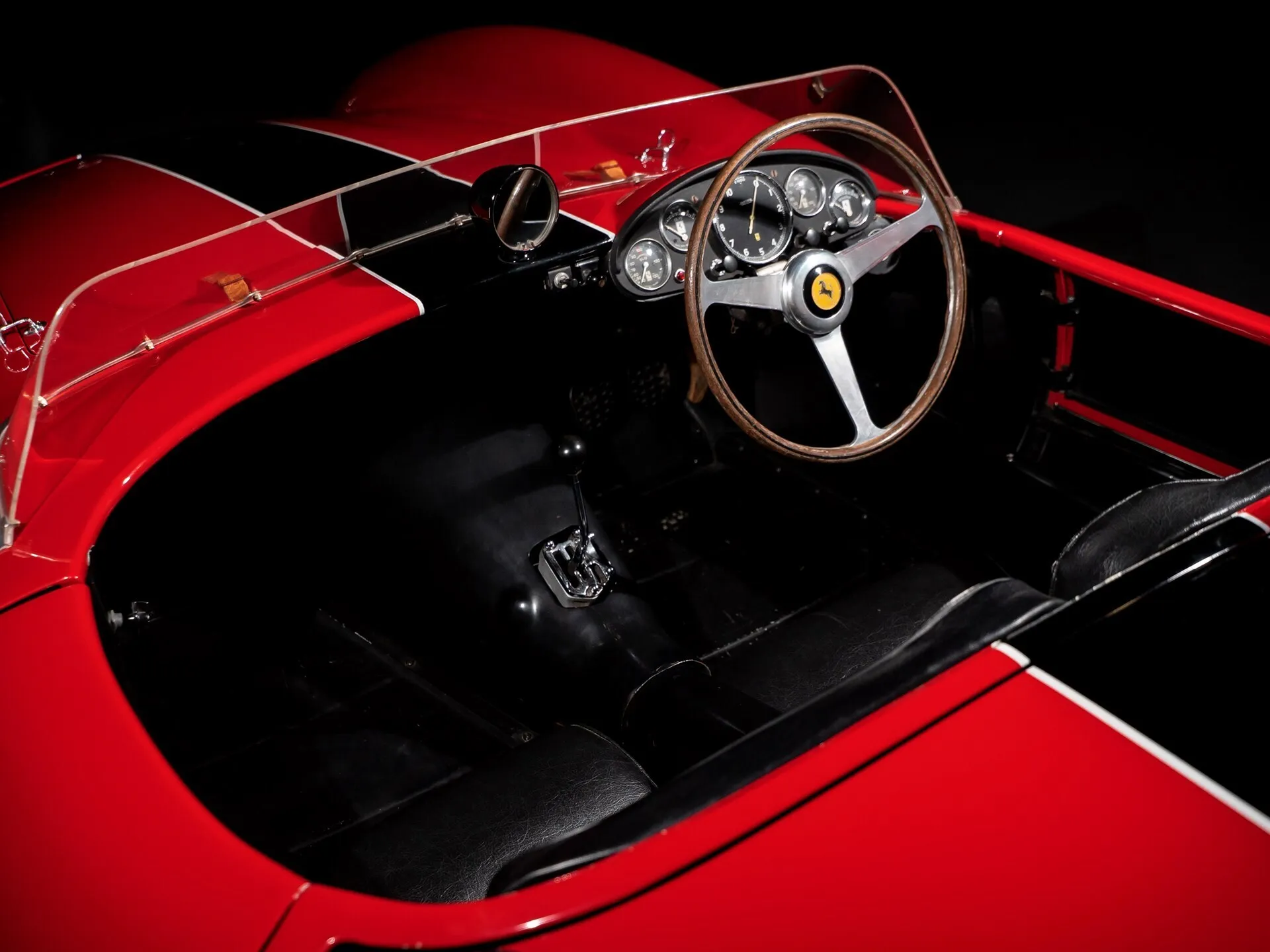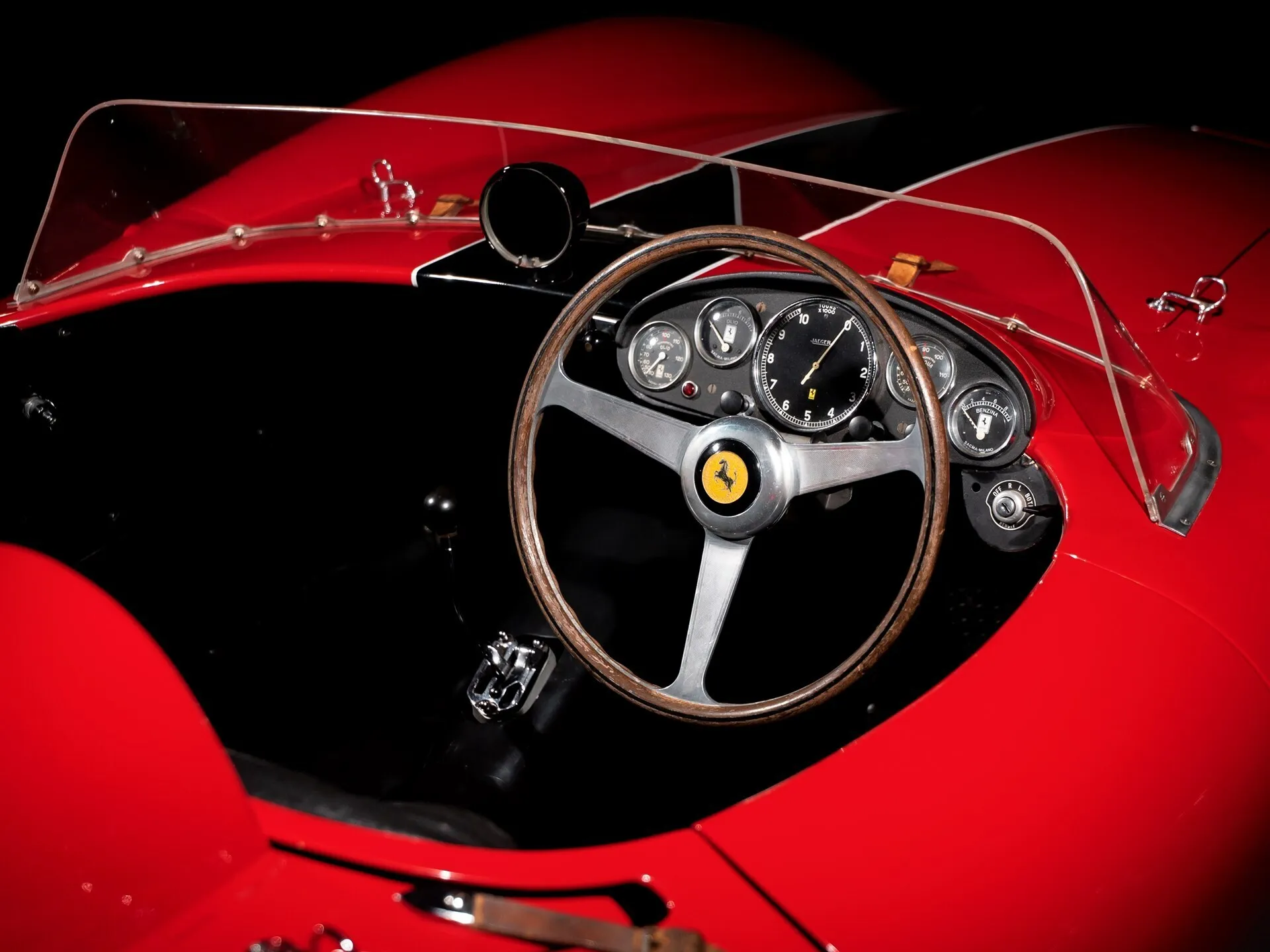Sotheby’s Hong Kong Presents the Most Significant Chinese Works of Art Sale Series to Take Place in the Last Decade
Dr Wou Kiuan, Mr Joseph Lau & Sir Joseph Hotung, and more
(Left to Right)
The Private Collection of Joseph Lau
A Fine Blue and White ‘Lotus Scroll’ Vase, Meiping, Ming Dynasty, Yongle Period
Est: HK$ 25 – 35 million / US$ 3.2 – 4.5 million
The Dr Wou Kiuan Collection
A Magnificent Ruby-Ground Yangcai ‘Trigrams’ Reticulated Vase,
Seal Mark and Period of Qianlong
Est: HK$ 60 – 120 million / US$ 7.6 – 15.3 million
The Personal Collection of the late Sir Joseph Hotung
A Unique and Highly Important Moulded Blue and White Barbed ‘Fish’ Charger, Yuan Dynasty
Est: HK$ 30 – 50 million / US$ 3.8 – 6.4 million
Auction: 8 – 9 October 2022
This October, Sotheby’s Hong Kong presents the most significant Chinese Works of Art sale series with the convergence of the finest private collections from the world’s greatest Chinese art collectors including Dr Wou Kiuan, Mr Joseph Lau and Sir Joseph Hotung. The star lot of this season is a Magnificent Ruby-Ground yangcai ‘Trigrams’ Reticulated Vase from the Qianlong period (Est: HK$ 60 – 120 million / US$ 7.6 – 15.3 million) from the Dr Wou Kiuan Collection Part II, a carefully curated sale presenting six masterpieces from the 18th century. The collection of Joseph Lau, comprising 11 imperial gems, occupies pride of place among the very finest ever assembled in the field. At the heart of Sir Joseph Hotung’s personal collection is an array of masterpieces which charts many of the peaks in China’s long history, from the Neolithic Period to the Qing dynasty. Adding to this season’s strong line-up of renowned private collections are a selection of Ming and Qing jades from the collection of Victor Shaw and a group of archaic artworks from an important Japanese collection.
This Autumn sale series marks a once-in-a lifetime opportunity for collectors and enthusiasts of Chinese art. Very rarely will you see such a superlative line-up from the world’s most celebrated Chinese art collections. We will be offering fresh to market masterpieces in almost each and every field of Chinese art and this is possibly the most anticipated sale series Sotheby’s has ever hosted.
These illustrious private collections not only showcase the impeccable taste, vision and passion of this century’s most influential Chinese art collectors, but also offer a window to the extraordinary depth and breadth of Chinese art forms.
A Journey Through China’s History: The Dr Wou Kiuan Collection Part II
Following on from the success of Part I in New York in March and the record-breaking first Hong Kong chapter in April, the carefully curated sale presents six masterpieces from the 18th century showcasing the unparalleled technical mastery in the imperial kilns in Jingdezhen, including a group of enamelled porcelains formerly from the Fonthill heirlooms which have not surfaced the market in around half a century. Highlights include a Qianlong magnificent and possibly unique ruby-ground yangcai ‘trigrams’ reticulated vase, corroborated by the court archives to have been made either in 1743 or immediately thereafter. The vase is a tangible testament to the unprecedented and unparalleled culmination of technical virtuosity in porcelain production between 1741 and 1743, fuelled by an imperial reprimand from the Qianlong Emperor. (Catalogue essay available upon request)
Another highlight also endowed with the Fonthill provenance is a magnificent pair of yangcai ‘butterfly’ vases superbly enamelled on a bright pink ground in a manner imbued with Western influences and fired to perfection.
Gems of Imperial Porcelain from the Private Collection of Joseph Lau Part II
The name Joseph Lau resonates with collectors around the globe and it is one that stands for excellence. Chinese art stands at the genesis of Joseph Lau’s adventure with art and it is on Chinese art that he cut his exacting eye before expanding his horizons. Lau assembled one of the finest collections of Chinese porcelain ever, articulated around masterpieces, each representative of the best of a certain period and type, and handpicked from the most prestigious collections.
This season’s offerings include a very fine blue and white porcelain dating from the Yongle period in the early 15th century, the pinnacle of underglaze-blue decorated wares and a period much celebrated for imperial patronage in the arts.
This meiping decorated with a lotus scroll is remarkably elegant in its potting and represents the epitome of that classic shape. Similar examples are known in the palace museums in Beijing and Taipei as well as in the Middle Eastern Royal collections of the Ottoman sultans which attest to their universal appeal and high status.
This magnificent circular flask brilliantly enamelled with fruit represents a particularly ambitious and unusual combination of the doucai and fencai schemes, which brings out the ripe fruit. The present example is superior in all aspects, from the quality of the painting, richness of the cobalt, clarity of the glaze to its pristine condition.
Hotung: The Personal Collection of the late Sir Joseph Hotung
The late Sir Joseph Hotung (1930-2021) was respected and revered in the art world for his jade collection and for his philanthropy. What is much less known is his discriminating eye for the quality and design, and the personal collection formed at his house in London as a backdrop to his life – seen only by a privileged few. The series of dedicated sales begin in Hong Kong with a focus on the Chinese masterpieces in his collection and are divided into Evening and Day sales. The works on offer, ranging from Neolithic jades and bronzes from Shang – Han dynasties to Ming dynasty furniture and modern Chinese paintings, each represent the most sought-after of their period and type. Highlights include a unique and highly important moulded blue and white barbed ‘fish’ charger from the Yuan dynasty and an important and outstanding bronze male chimera, bixie, from the Han dynasty, the latter endowed with a prestigious provenance and illustration history tracing back to as early as the 1920s in Paris.
This dish is unique and was done with an attention to detail that is exceptional even among this rare group of relief-moulded dishes of the Yuan dynasty. Not only is its relief decoration extraordinarily crisp and detailed, but the popular fish design is here also rendered in a highly individual manner that knows few close comparisons. It is a masterpiece that combines the best and rarest Yuan blue-and-white styles.
This Han dynasty bronze chimera, powerfully rendered with vitality and strength, is a tour de force of Chinese bronzes at their peak. In addition to the prestigious Stoclet provenance, the sculpture’s publication and exhibition history can be traced back to as early as the first half of the 20th century, setting it apart from other archaic bronzes in private hands and even the most important museum examples.
Important Chinese Art including Jades from the Victor Shaw Collection
The Important Chinese Art auction presents a tightly curated sale including masterworks spanning five millennia, from the Neolithic period through to the Qing dynasty. Highlights include an extremely rare Qianlong period chenxiang mirror ‘raree’ cabinet and a Shang dynasty marble frog.
The ‘raree’ box, possibly commissioned in the 17th year (1752), is set with a mirror flanked by two circular holes through which the Qianlong Emperor would have peeped through to view painted pictures, one of which being his most poignant and enigmatically titled double-portrait, ‘One or Two?’ The powerfully carved box cabinet not only showcases the influence of Western mechanism in 18th century court in China, but is possibly the only example known to be employed by the Qianlong Emperor to ponder on the nuances between the literal reflection of the self and self-identity.
The Shang dynasty marble frog belongs to a very rare group of marble carvings marking the dawn of Chinese sculpture. Ever so skilfully and minimalistically carved, the sculpture has truly stood the test of time in its timeless aesthetic. Also from the same important Japanese collection as the marble frog is a group of archaic artworks, including a splendidly decorated gold and silver inlaid sword-hilt, also not seen on the market for over 30 years.
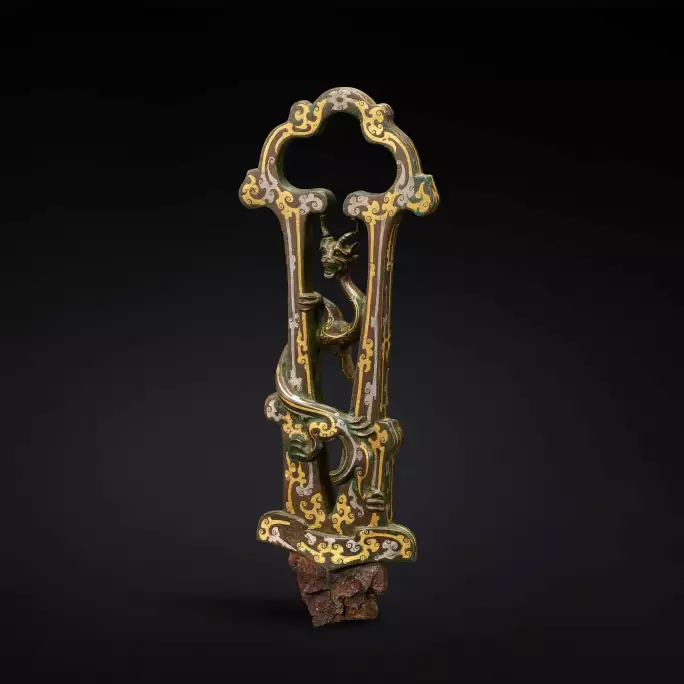
LATE EASTERN ZHOU – EARLY WESTERN HAN DYNASTY
17.5 CM
EST: HK$ 1,500,000 – 2,000,000 / US$ 191,000 – 255,000
The sale also includes a carefully selected group of Ming – Qing jades from the collection of Victor Shaw (1935-2020), who was renowned not only for his discerning eye but also his philanthropic pursuits.
 A WHITE JADE ARCHAISTIC ‘DUCK AND LOTUS’ GROUP,
A WHITE JADE ARCHAISTIC ‘DUCK AND LOTUS’ GROUP,QING DYNASTY, 18TH CENTURY
13.8 CM
EST: HK$ 500,000 – 600,000 / US$ 63,700 – 76,500FOTOGRAPHY & TEXT “Courtesy Sotheby’s”.



